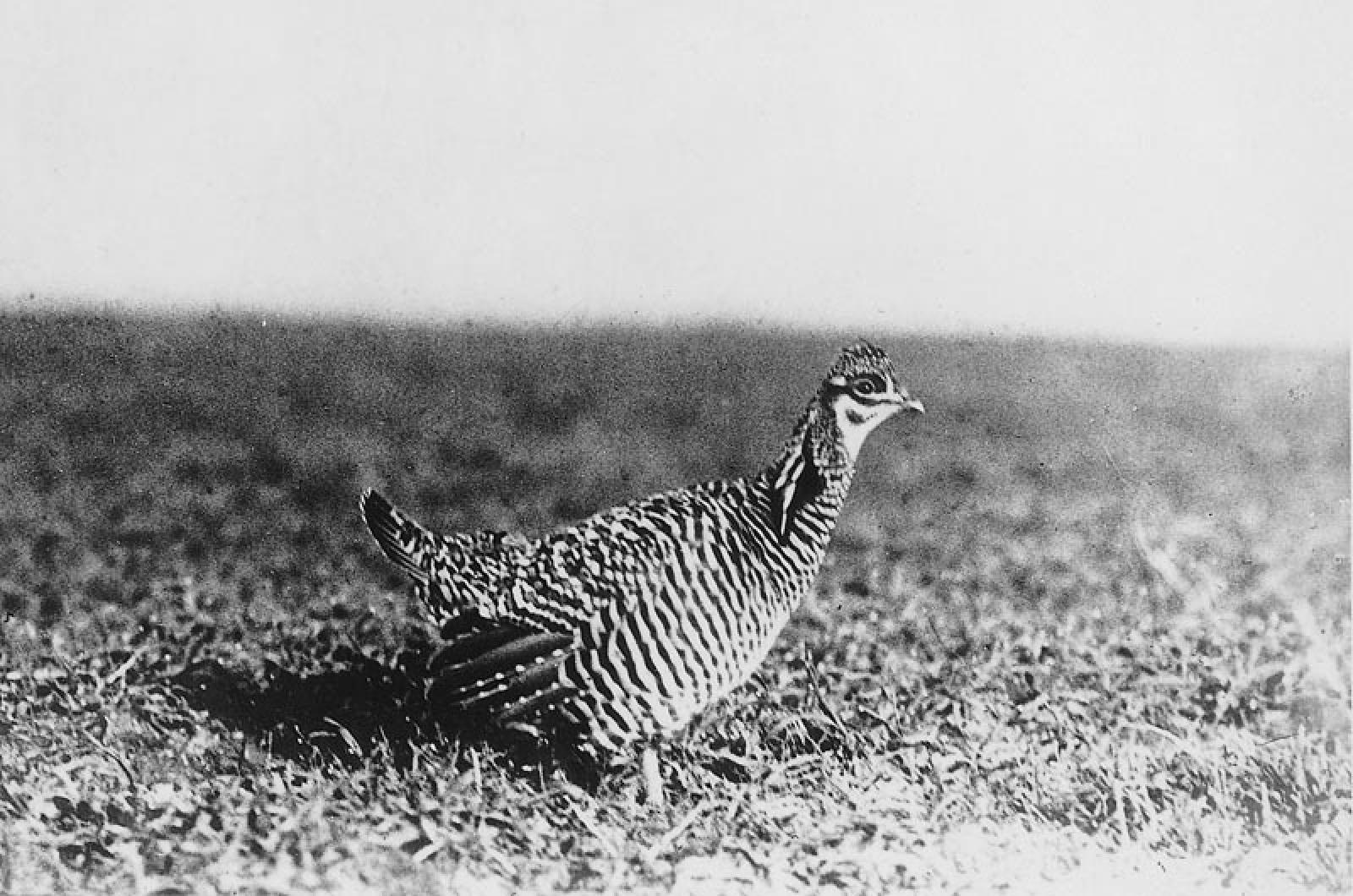From the April 3, 1931 edition of the Vineyard Gazette:
The world’s last heath hen on his rambles over his scrub oak preserve on the great plain of Martha’s Vineyard is now wearing two tiny bracelets, one aluminum and one copper. He was banded on Wednesday by Dr. Alfred O. Gross and Thornton W. Burgess who took him into a brief temporary captivity. For a few minutes the most interesting individual bird in the world was held, photographed and hastily examined; then he was freed and rushed off into his favorite retreat, just as much a wild and independent creature as before.
The bird seemed to be in fine condition and offered tough resistance to the encroachments of science.
This was the first time that the bird has been taken and examined. It was caught in a wire trap, held only as long as necessary, and liberated without harm. The purpose of the banding is twofold. In the first place the fact will be established beyond possibility of doubt that this is actually the last heath hen and that the same bird is seen each time. In the second place the bird will carry identification marks wherever he goes and when death at last overtakes him, the bands may some day shed light upon the manner of his going. Although no one likes to think of the heath hen’s death, it is a possibility which has to be faced. After the bird is seen no more, the Vineyarder may search for him in vain, and a tiny band on a piece of bone in some infrequented spot may reveal to a hunter at some far day just how and where the last of the heath hen died. The banding really serves most of the purposes which might be served by taking the bird into captivity, but he is left free to live out his days in his own way.
Solitary and free in his ancestral range, the last heath hen is serving a great cause, Dr. Gross said, and doing what no other bird has ever done all over the world. He is aiding the cause of conservation, directing attention to the need for protecting the dwindling species of other valuable creatures, and making people think in a way they have never happened to think before of the great unprotected world of the birds. The hero is one of the singularly thrilling romances of natural history, the last heath hen is by no means ending his life in a wasted way. The eyes of human beings everywhere are on him. Dr. Gross told of articles which he has published on the heath hen being translated into many foreign languages and being reprinted abroad. In Germany, for example, the picture of the heath hen appeared on the cover of a magazine, inscribed “The Last Heath Hen” and in France, too, the story has been published widely in all its details. Dr. Gross is inclined to attribute a number of important conservation projects to the heath hen, directly or indirectly. And as long as the bird lives he is likely to continue to be an educator.
Dr. Gross and Mr. Burgess gave a great deal of credit to Mr. James Green for his watchfulness and interest. The bird, they said, could not have a better protector. The last heath hen always appears on the Green farm, his ancestral booming place, in the spring. His appearances can be foretold with great accuracy. So have appeared, for untold decades, the ancestors of the same heath hen at the same place. Heath hen have strong sense of location, Dr. Gross said, comparing them with the prairie chickens of the middle west which return to the same localities even when great changes take place.
The bird deviated somewhat from former custom this year, first by failing to appear on a fine day like Tuesday, and second by putting in an appearance Wednesday when the weather was so bad that the scientists believed he would not arrive. He also paid his calls at the booming field a little later in the morning than of old, as if, having no one to call him, he might be settling into the bad habit of late rising.
Despite the rain of Wednesday, the scientists took motion pictures which they believe will record the whole proceeding of trapping and banding the bird. Still pictures were taken and proved to be excellent. A wire trap was used, with a string leading to the blind in Green’s field where the observers were concealed. The motion picture camera was kept grinding as the trap was sprung and the bird taken.
Dr. Gross, of Bowdoin College, is the foremost expert on the heath hen and has recorded in his reports all the circumstances of the decline of the race. For a number of years he has made an annual census which, two years ago, turned into an observation trip. Mr. Burgess, best known for his radio talks and nature bedtime stories, has been accompanying Dr. Gross since 1928.
Dr. Gross and Mr. Burgess were the guests of Allan Keniston, Lambert’s Cove, during their stay.
Swelling the volume of publicity attained by the heath hen and the Island, Mr. Burgess said that the U. S. Biological Survey had recently asked him for fifty feet of his heath hen film to add to films of other game birds already in its possession.
Compiled by Hilary Wallcox
library@vineyardgazette.com




Comments
Comment policy »